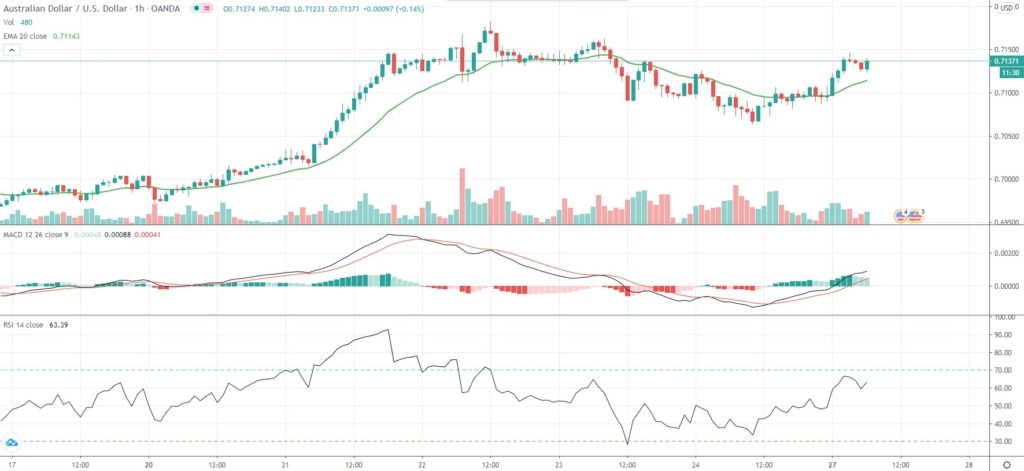AUD/USD extended gains from the prior trading day on Monday and kept trading not far from last Wednesday’s 27-month high of 0.7182, as the US Dollar continued to retreat against major peers on bets the Federal Reserve could signal another accommodative shift in its outlook at its policy meeting on July 28th-29th.
The central bank may once again stress on the benefits of an average inflation objective, which would allow borrowing costs to remain at low levels for a longer period.
“I think we’re seeing the U.S. dollar adjusting to that,” Chris Weston, head of research at Pepperstone, said.
“If they are to ever get inflation…then the reaction is to allow the economy to run hot for a large period of time. So the chance of the Fed raising in the next five years is being repriced in the U.S. dollar — there’s a momentum trade as people run this short position into the Fed meeting,” Weston added.
Meanwhile, in a speech during a Kanga News webinar on the topic “The Reserve Bank’s Operations – Liquidity, Market Function And Funding”, Reserve Bank of Australia’s Assistant Governor Chris Kent said the central bank was prepared to purchase government bonds in case of a significant deterioration in market conditions, or if required so that the RBA could achieve its 3-year yield objective of 25 basis points.
As of 6:57 GMT on Monday AUD/USD was edging up 0.44% to trade at 0.7137, after earlier touching an intraday high of 0.7146, or a level not seen since July 23rd (0.7162). The major pair advanced 1.59% last week, while marking its best performance since the business week ended June 5th.
In terms of economic calendar, today’s focus will be on the US durable goods orders report at 12:30 GMT. New orders for manufactured durable goods probably rose 7.2% in June from a month ago, according to market expectations, following a 15.8% increase in May. The latter has been the sharpest rate of increase in durable goods orders since July 2014.
The value of durable goods orders, excluding transportation items, probably rose at a monthly rate of 3.5% in June, according to expectations, following another 4% gain in May.
Bond Yield Spread
The spread between 2-year Australian and 2-year US bond yields, which reflects the flow of funds in a short term, equaled 14.5 basis points (0.145%) as of 6:15 GMT on Monday, up from 13.7 basis points on July 24th.
Daily Pivot Levels (traditional method of calculation)
Central Pivot – 0.7098
R1 – 0.7133
R2 – 0.7160
R3 – 0.7194
R4 – 0.7229
S1 – 0.7071
S2 – 0.7037
S3 – 0.7010
S4 – 0.6983






